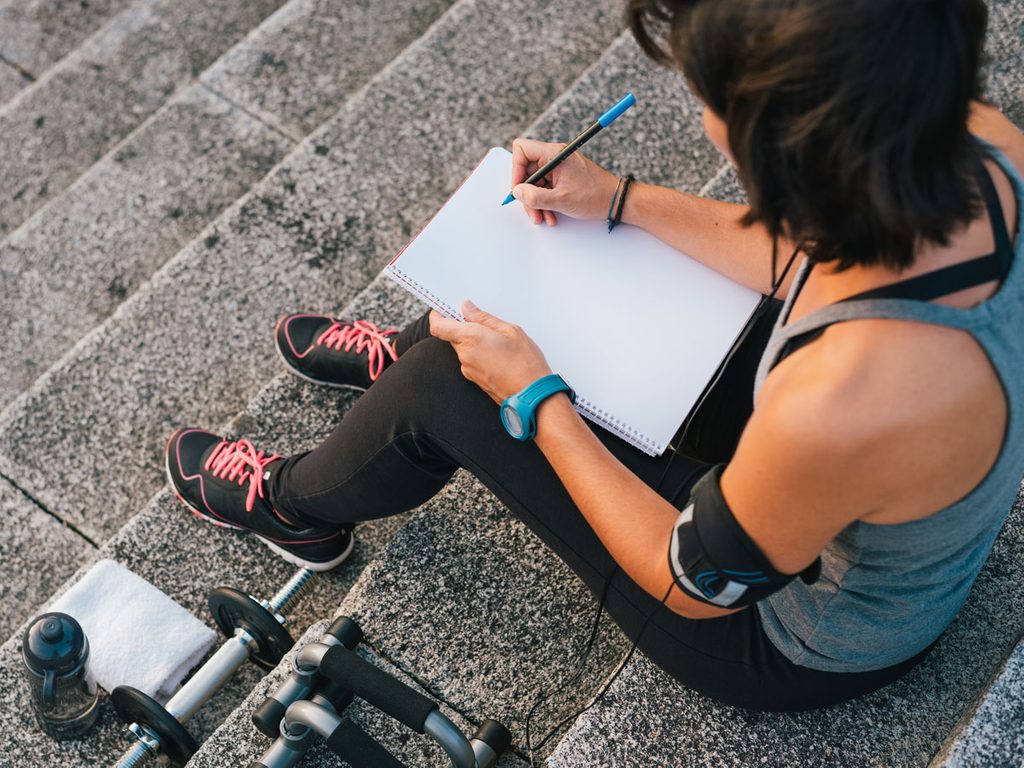These 4 Old-School Fitness Techniques Could Help You Achieve Your Goals

Not the fitness tracker type? Peter Levidis, a certified athletic therapist, shares the best old-school fitness methods to try.
Unfortunately, with the COVID-19 pandemic, human interaction has been reduced to simple waves from afar, conversations from balconies and teleconferencing.
For the fitness industry, this has taken quite the toll. I find a good part of the reason we frequent our favourite gyms is the people we sweat with, who we can curse with during challenging reps and high-five after a successful set.
But with that all put on hold, more people are turning to fitness trackers to stay in shape. Fitness trackers are fascinating, with just one swipe, you can see how many calories you’ve burned, how many steps you’ve taken and what your heart rate is. Open a corresponding app and you can see how your activity levels, sleep patterns and progress compare to those of your friends. They’re bright and colourful, almost like a video game. Considering that 84 percent of Canadians have less-than-active lifestyles, any device that inspires movement is of value, whether that goal is just getting up from the sofa or hitting 10,000 steps a day.
But as an athletic therapist since 1997, I can assure you this: Technology isn’t going to make or break your ability to get in shape. Our methods of tracking fitness back then were simply pen and paper. The extent of our tech was recording VHS tapes of clients’ exercises and giving them the cassettes as homework — and we thought that was cutting-edge.
While those methods may seem laughable now that technology has advanced, our bodies haven’t changed. Simply put, it’s still your legs running on the treadmill, your biceps lifting that weight and your diet that determine your fitness level, regardless of whether it’s logged on an app or not.
If you’re not the tracker type, these old-school methods can still provide the same records, accountability and connectivity as digital tools. Here’s how to proceed.
1. Plan ahead
Set goals for yourself and write them down. Put that note somewhere you will see it often – you want to keep your goals as top of mind as a pinging watch. Invest in a calendar and mark down key dates, such as fitness classes, weigh-ins and fitness events, so that you can stay accountable. Plus, physically crossing goals off a calendar fosters your sense of accomplishment.
2. Reinforce the basics
A lot of the habits supported by fitness trackers are common sense: Move more, eat well and get good rest. Learn how to cook healthy meals, and give yourself a consistent bedtime to ensure that you’re getting eight hours of sleep.
3. Revamp your routine
Trackers encourage small changes in your routine (like when they ping you to get up from your desk every hour) that add up over time. To do this on your own, make small tweaks to your existing schedule, such as taking the stairs instead of the elevator or taking the dog for a long walk after dinner every day. (Plus, here’s an effective workout you can do on your stairs.)
4. Connect IRL
The social connectivity of a fitness tracker is there for a reason: It’s motivating and fun. But it’s even better to partner up IRL. For example, with teleconferencing, make a weekly spinning date with a friend or bring them along with a phone call for a hike on the weekend!
I know you can achieve your goals with these time-tested methods. As for those people I trained with a pen, paper and VHS in the ’90s? They got just as fit as any gadget-wearing health nut today – maybe even fitter.
Peter Levidis is a certified athletic therapist at Sport Specialists.
Next, learn how to perfect your form during at-home workouts.




